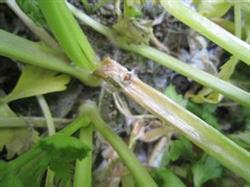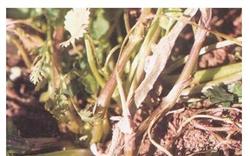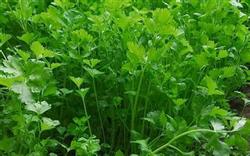Pollution-free control techniques of Sclerotinia sclerotiorum in coriander

1. Agricultural control (1) rotation or high-temperature disease control rotation with food crops for 2-3 years, or rotation with rice or aquatic vegetables for 1 year. If the protected disease land cannot be rotated, high temperature control can be adopted. The method is: during the high temperature period of three summers, first clean the countryside, remove the residual branches, diseased leaves and weeds, and take them out of the field for deep burial or burning. Apply lime 50100kg every 666.7 square meters, add crushed rice straw or wheat taro 500kg, evenly apply to the surface, immediately turn into the soil, ridge about 30cm, furrow irrigation, until saturated, in order to always have water in the furrow, irrigation every day; plastic film, sealed around with soil, closed shed, chamber for 15-20 days. This method can not only kill part of the sclerotia, but also kill Fusarium, root-knot nematode and other germs. (2) large field soil or peat soil should be selected for raising seedlings in disease-free soil, and management should be strengthened to cultivate disease-free and strong seedlings. If there are conditions, the hotline can be used to raise seedlings in the seedbed where vegetables have been planted. The sclerotia in the soil of the seedbed can be killed by setting the temperature of the seedbed to 55-56 ℃ before sowing for 2 hours. Then cool down, sow, and raise seedlings normally. (3) choose disease-free seeds to leave seeds from disease-free plants. For seeds mixed with sclerotia, rinse the seeds with 10% brine and remove sclerotia. Then rinse the seeds repeatedly with clean water, dry them and sow them. The seeds can also be soaked in warm water for 50 ℃ for 10 minutes (keep the temperature) to kill the sclerotia mixed in the seeds. (4) to strengthen the cultivation of protected areas, we should strengthen the release of air, reduce the humidity, and create an environmental condition that is not conducive to the occurrence and development of Sclerotinia sclerotiorum. (5) mulching plastic film can prevent the ascomycete from being unearthed. If the ground is covered with ultraviolet blocking film, the effect is better, because this film can inhibit sclerotia germination. (6) when diseased plants are found in clean fields, they should be removed in time, which can reduce the spread of bacteria in the field. two。 For those planted in protected areas for the prevention and control of pollution-free pesticides, 3.3% Tex smoke agent was used before the disease, 250g per 666.7 square meters, divided into 4-5 points, carried out in the evening, closed fumigation, fumigation once every 7 days, continuous fumigation 5-6 times. At the initial stage of the disease, 42% Tekedo suspension can also be sprayed 1000 times, once every 7 days, 3-4 times in a row.
- Prev

Field management method of coriander
Sclerotinia sclerotiorum caused by Sclerotinia sclerotiorum has become a major obstacle in the production of parsley with the continuous expansion of coriander planting area in recent years, especially the difficulty of crop rotation in protected areas. First, symptom identification Sclerotinia sclerotiorum is mainly harmful to the base of the stem, followed by leaves. At the beginning, out.
- Next

Key techniques for high yield of summer sowing coriander
Coriander likes to be cold and cool, and grows slowly when the temperature is higher than 20 ℃, and stops growing when the temperature is higher than 30 ℃. Therefore, it is difficult to cultivate coriander in summer, and the following cultivation techniques must be grasped. First, the selection of varieties should choose drought-tolerant, fast-growing, late bolting varieties, such as purple stem coriander, Beijing coriander, North China leaves.
Related
- Where is it suitable to grow horseradish in China? it is expected to see the middle altitude horseradish in Alishan.
- How to prevent tomato virus disease reasonably? (Control methods included)
- Many people like to plant towel gourd on the balcony. What are the main points of this method and management?
- What crops can chili peppers be mixed with?
- Fertilization techniques and matters needing attention in Tomato
- What are the grafting techniques for peach seedlings in spring?
- Harm and control methods of root swelling disease of Chinese cabbage
- What are the pests of sweet potatoes? How to prevent and cure it?
- Symptoms, causes and Control methods of navel Rot in Tomato
- The cause of "Cucumber rotten bibcock" in Farmers' planting Cucumber and its Control Plan

